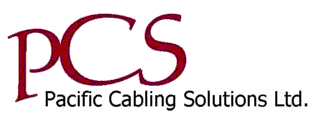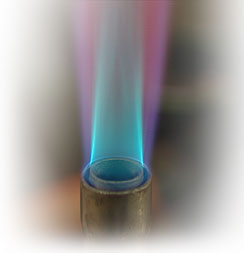
CSA Flame Test Ratings

 |
CSA Flame Test Ratings |
|
| About PCS | Products | Services | Contacts | What's New | Information |
| Careers | Price List Index | Vendor Partners | Training | Promotions | Clearance |
|
The National Electrical Code is a set of guidelines describing procedures which minimize the hazards of electrical shock, fires, and explosions caused by electrical installation. The text of the NEC is contained in nine chapters, each chapter broken into individual articles. NEC types are acronyms consisting of a prefix describing cable type (e.g. coax, CATV, fiber optic) and a suffix indicating the type of flame test it has passed and where it can be installed. Articles describing wire and cable products — including required cable markings — are listed in the chart below. |
||||||
|
NEC |
Article |
Test Requirement | NEC Article | |||
| Plenum | Riser | Commercial | Residential | |||
| 725 | CL2 | Class 2 Cables | CL2P | CL2R | CL2 | CL2X* |
| CL3 | Class 3 cables | CL3P | CL3R | CL3 | CL3X* | |
| PLTC |
A stand-alone class. This is a power limited tray cable — a CL3-type cable which can be used outdoors, is sunlight- and moisture-resistant and must pass the Vertical Tray flame test. |
None | None | PLTC | None | |
| 760 | FPL |
Power limited, fire protective signaling circuit cable |
FPLP | FPLR | FPL | None |
| 770 | OFC |
Fiber cable also containing metallic conductors |
OFCP | OFCR | OFCG, OFC | None |
| OFN | Fiber cable only containing optical fibers | OFNP | OFNR | OFNG, OFN | None | |
| 800 | CM | Communications | CMP | CMR | CMG, CM | CMX* |
| MP | Multi-Purpose Cables | MPP | MPR | MPG, MP | None | |
| 820 | CATV | Community antenna television | CATVP | CATVR | CATV | CATVX** |
| 830 | BM | Network-powered broadband communications cable | BLP | BMR | BM | BLX |
| *Cable diameter must be less than 0.250″ **Cable diameter must be less than 0.375″ | ||||||
|
C(UL)
Certifications; 1. CMP —
Cable meeting CSA FT6 or NFPA 262 (UL 910); |
||||||
| FLAME TESTS | ||||||
| FT1 |
FT1 Vertical Flame Test — per C.S.A. C22.2 No. 0.3-92 Para 4.11.1 A finished cable shall not propagate a flame or continue to burn for more than one (1) minute after five (5) fifteen (15) second applications of the test flame. There is an interval of fifteen (15) seconds between flame applications. The flame test shall be performed in accordance with Para 4.11.1 of Canadian Standards Association (CSA) Standard C22.2 No. 0.3. In addition, if more than 25% of the indicator flag is burned, the test cable fails. FT1 Cables can be used in Combustible buildings. |
|||||
| FT4 |
FT4 Vertical Flame Test — Cables in Cable Trays per C.S.A. C22.2 No. 0.3-92 Para 4.11.4 The FT4 Vertical Flame Test — Cables in Cable Trays is similar to the UL-1685 Vertical Tray Flame Test, but is more severe. The FT4 test has its burner mounted at 20° from the horizontal with the burner ports facing up. The UL-1685 Vertical Tray has its burner at 0° from the horizontal. The FT4 samples must be larger than 13mm (.512″) in diameter. If not, then the cable samples are grouped in units of at least three (3) to obtain a grouped overall diameter of 13mm. The UL-1581 Vertical Tray does not distinguish on cable size. The FT4 has a maximum char height of 1.5 m (59″) measured from the lower edge of the burner face. The UL-1685 has a flame height allowable up to approximately 78″ measured from the burner. FT4 Cables can be used in Non-Combustible buildings. |
|||||
| FT6 |
FT6 Horizontal Flame & Smoke Test — per C.S.A. C22.2 No. 0.3-92 Appendix B Products passing the FT6 Horizontal Flame and Smoke Test are designated FT6 in the column where the trade number appears. This test is for cables which must pass a Horizontal Flame and Smoke Test in accordance with ANSI/NFPA Standard 262-1985 (UL-910). The maximum flame spread shall be 1.50 meters (4.92 ft.). The smoke density shall be 0.5 at peak optical density and 0.15 at maximum average optical density. |
|||||
|
Combustible Construction
Combustible
Construction; means that type of construction that does not meet the
requirement for noncombustible construction. Combustible means that a
material fails to meet the acceptance criteria of CAN/ULC S114, (Standard
Method of test for determination of non-combustibility in Building
Materials) (ref: NBC Part 1 Section 1.1.3.2). Non-Combustible Construction; means that type of construction in which a degree of fire safety is attained by the use of noncombustible materials for structural members and other building assemblies. Non-Combustible means that a material meets the acceptance criteria of CAN/ULC S114, (Standard Method of test for determination of non-combustibility in Building Materials) (ref: NBC Part 1.1.3.2). |
||||||
|
Cable
Substitution Hierarchy as per C22.2 #214 — Communication Cables A. Communication cables marked MPP, CMP, MPR, CMR, MPG, CMG, MP, CM, CMX, CMH, FT6, and FT4 have been found to meet the standard criteria for FT1.
|
||||||